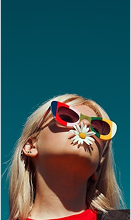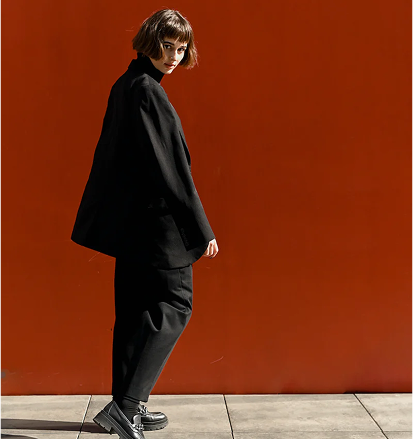The early 2000s gave us some of the most talked-about fashion moments in modern history.
Those years brought velour tracksuits to red carpets, made visible logos a status symbol, and convinced us that jeans could sit anywhere below the natural waist.
The decade mixed futurism with bohemian freedom, blended hip-hop influences with high fashion, and turned celebrities into walking billboards for designer brands.
This guide takes you through the cultural forces that shaped 2000s style, the specific trends that defined the decade, and practical ways to bring these looks into your wardrobe today without looking like you’re wearing a costume.
What Influenced 2000s Fashion
The early 2000s marked a shift in how people consumed fashion. The internet was expanding, celebrity culture reached new heights through reality TV, and music videos became style laboratories.
Red carpet moments generated instant conversations, and paparazzi shots turned everyday celebrity outfits into fashion news.
The decade operated on two seemingly opposite impulses: Y2K futurism with its shiny fabrics and metallics, and bohemian revival with flowing silhouettes and earthy textures.
Brand identity became central to getting dressed. Wearing visible designer labels wasn’t considered tacky; it was the point.
Monogrammed bags, logo belt buckles, and branded waistbands communicated status and style knowledge.
As Vogue observed, the era featured “trends so bad they were almost good: bodycon dresses, low-rise jeans, boho chic, It girls, and It bags.”
2000s Fashion Timeline
| Years | Key Trends | Cultural Moments |
|---|---|---|
| 2000-2002 | Boho revival, peasant tops, maxi skirts, low-rise pants emerge, and logo mania begins | Britney Spears and Justin Timberlake’s denim moment, reality TV boom |
| 2002-2005 | Y2K metallics peak, velour tracksuits dominate, rhinestones everywhere, skimpy silhouettes | Paris Hilton’s “The Simple Life,” Juicy Couture’s golden era |
| 2005-2007 | Ultra-low rise declines, boho-luxury style rises, Rachel Zoe influence grows | Celebrity stylist culture peaks, red carpet becomes fashion news |
| 2007-2009 | Simpler lines return, skinny jeans take over, layering increases, indie/rock influence | Economic recession shifts priorities, and street style photography emerges |
Major Styles & Subgenres of 2000s Fashion
The decade didn’t settle on one look; it gave us several distinct styles that often existed side by side. Here’s how the major style movements broke down.
1. Y2K / Futuristic Pop
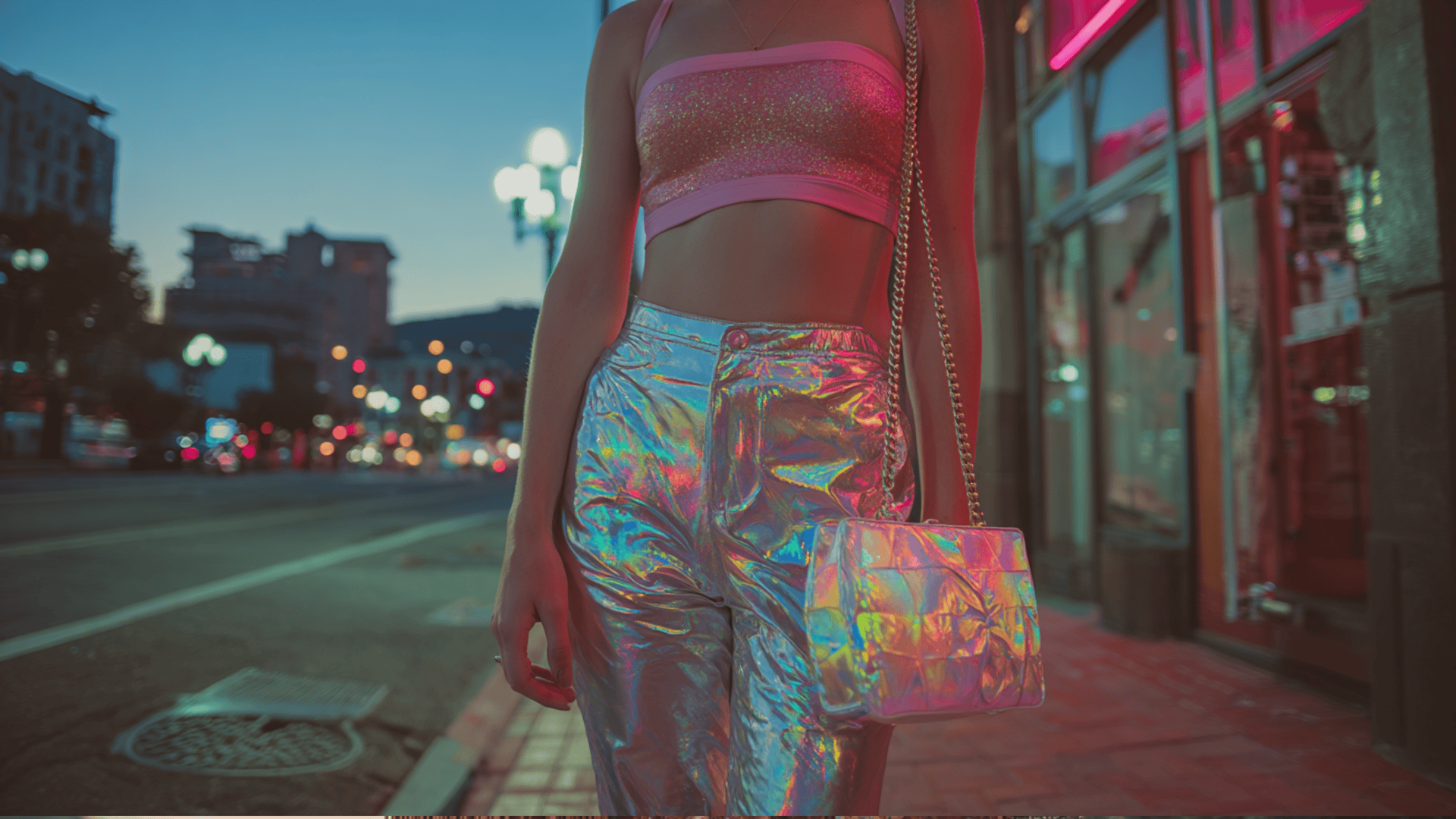
This style captured technology optimism through clothing. Shiny fabrics, iridescent materials, holographic prints, and metallics dominated.
The silhouettes favored asymmetry, micro handbags barely big enough for a phone, and tube tops that showed maximum skin. Colors leaned toward silver, pink, and electric blue.
2. Boho-Chic / Bohemian Revival

The opposite end of the spectrum brought peasant blouses, maxi dresses, fringe details, and flowing fabrics. This style pulled from vintage references and created an earthy, romantic style.
Layered accessories, mixed prints, and natural textures offered a softer alternative to the synthetic shine of Y2K pieces.
3. Hip-Hop / Streetwear Influence

Urban fashion brought oversized jerseys, baggy pants, cargo trousers, and logo-heavy sportswear into mainstream style.
Baby Phat exemplified this movement with signature low-rise pieces and rhinestone embellishments.
Trucker hats, high-end athletic wear, and statement jewelry defined the look. The style mixed comfort with flash.
4. Logo & Brand-Driven Style

Visible monograms from Gucci, Louis Vuitton, and Fendi became fashion statements themselves.
Large belt buckles displayed designer names, and logo tees worked as status symbols. The bigger and more recognizable the branding, the better.
5. Glamorous Casual / Loungewear Luxe
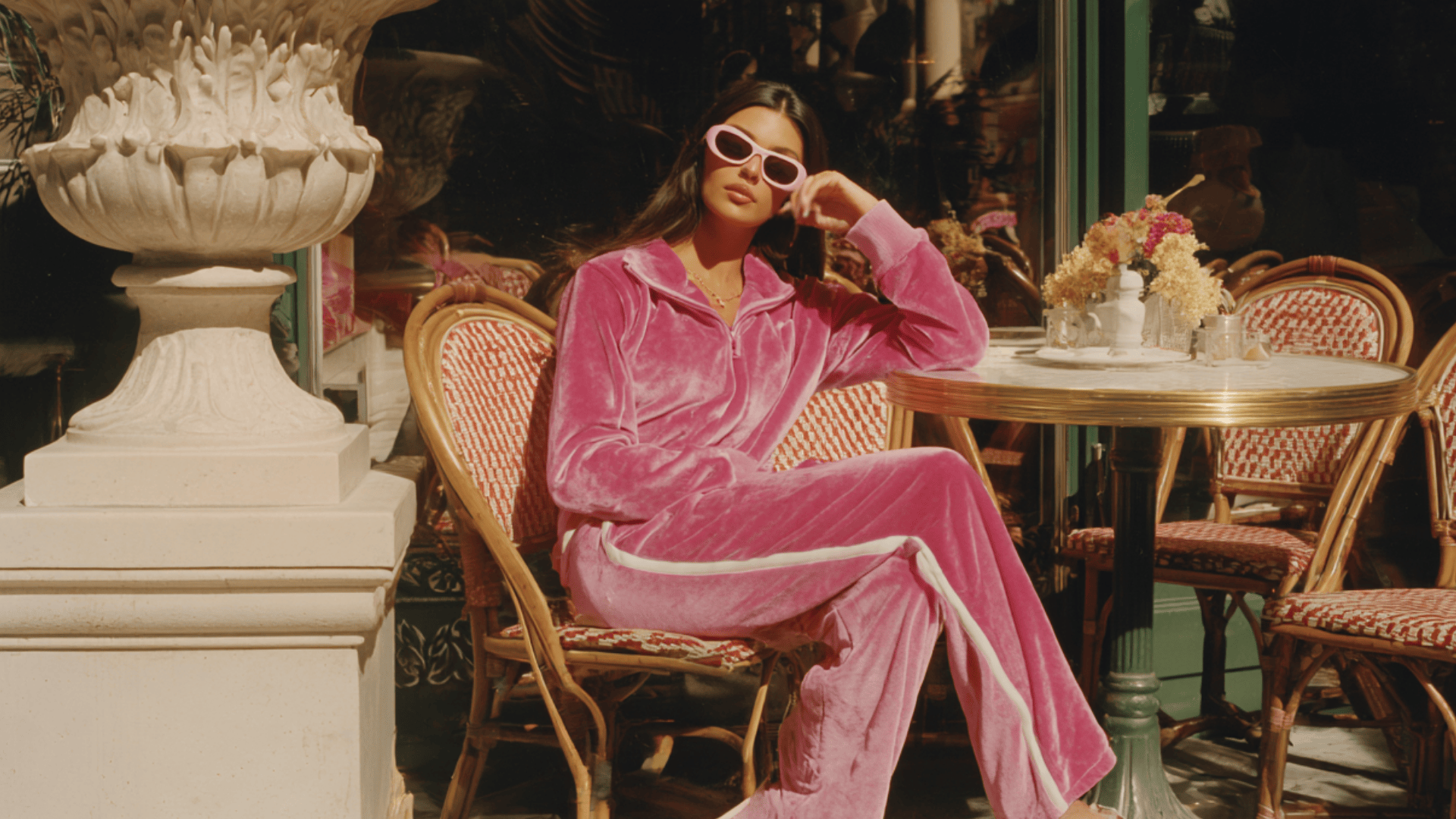
Velvet Juicy Couture tracksuits turned loungewear into acceptable public attire. The style mixed polish with comfort, slip dresses layered over tees, camisoles worn as outerwear, and coordinated sweat sets paired with heels.
It suggested you could look put-together without trying too hard.
Iconic 2000s Trends & Pieces to Know
These signature pieces and trends defined the decade’s look. Each one instantly signals early 2000s style.
1. Low-Rise Jeans & Ultra-Low Rises
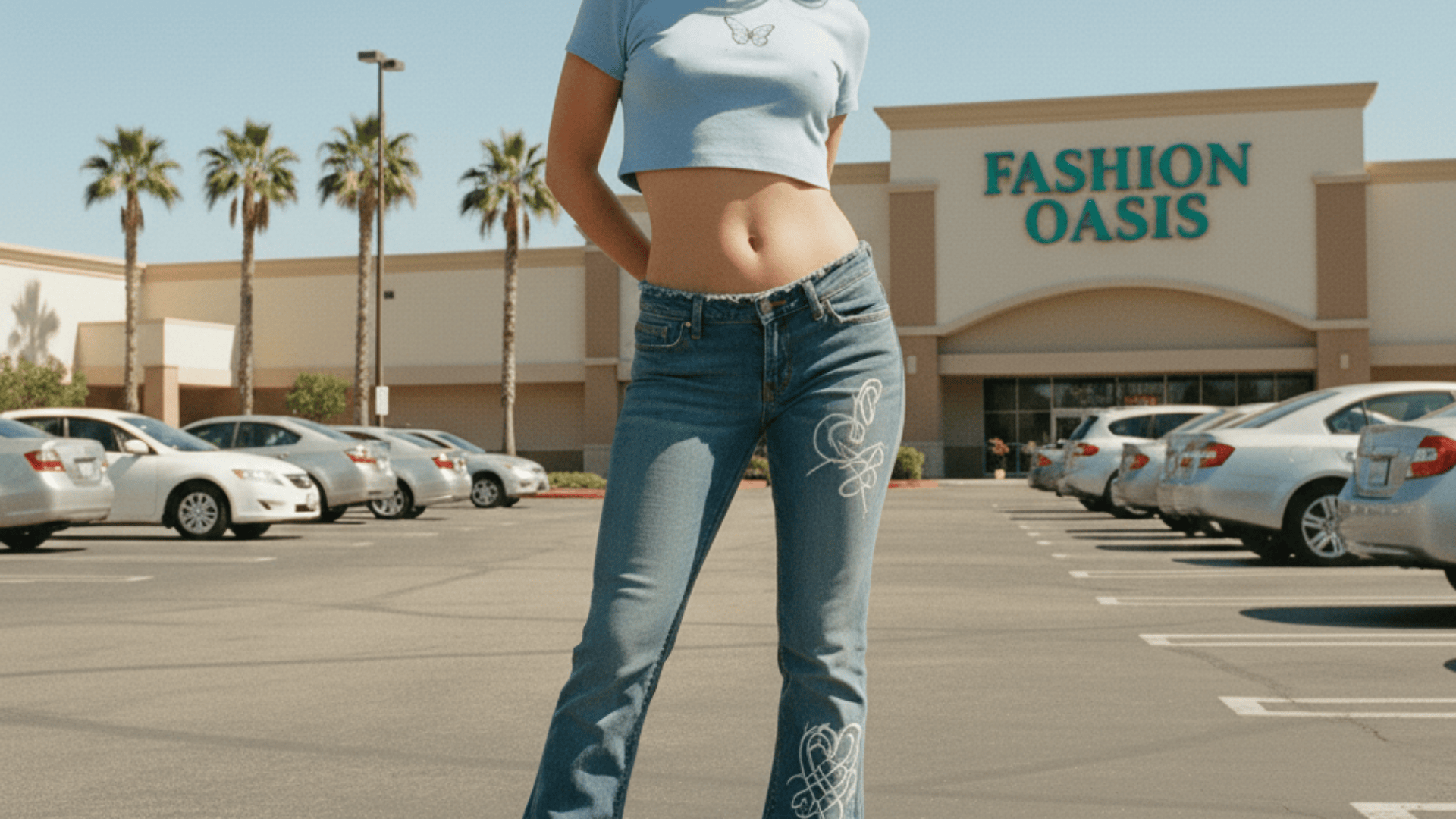
Low-rise jeans defined the decade’s silhouette. Some sat so low they seemed to defy physics. Paired with crop tops or baby tees, they created maximum midriff exposure.
The look required constant adjustment but dominated every style category from casual to dressy. Bootcut and skinny versions both worked.
2. Velour Tracksuits & Lounge Sets
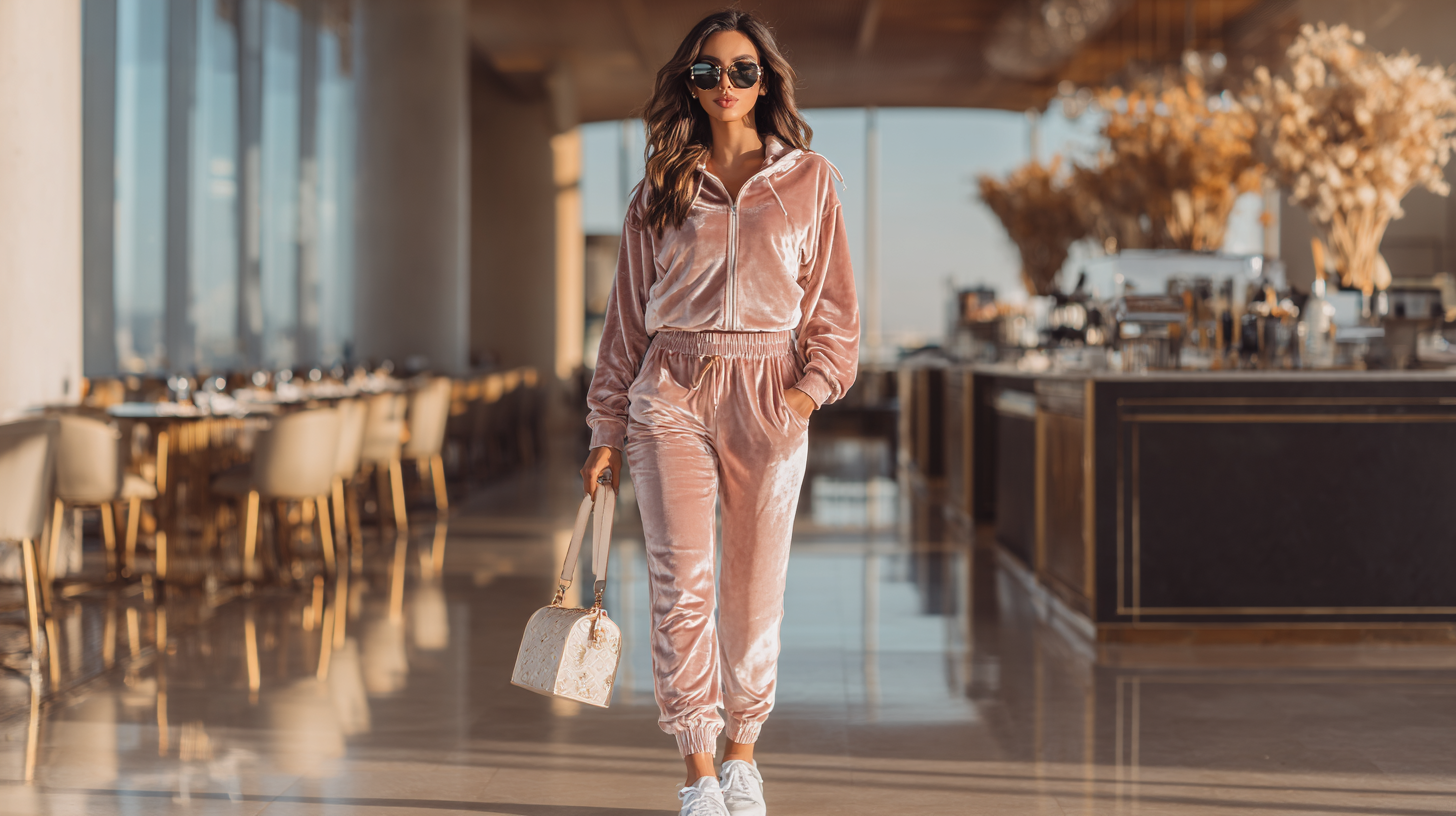
Velour tracksuits became luxury items. Juicy Couture’s matching sets appeared everywhere from airport terminals to upscale restaurants.
The contradiction of casual fabrication with luxury branding captured the era’s spirit.
Zip-up hoodies paired with flared or straight-leg pants created a polished loungewear look that felt appropriate for public spaces.
3. Micro Bags & Baguette Handbags
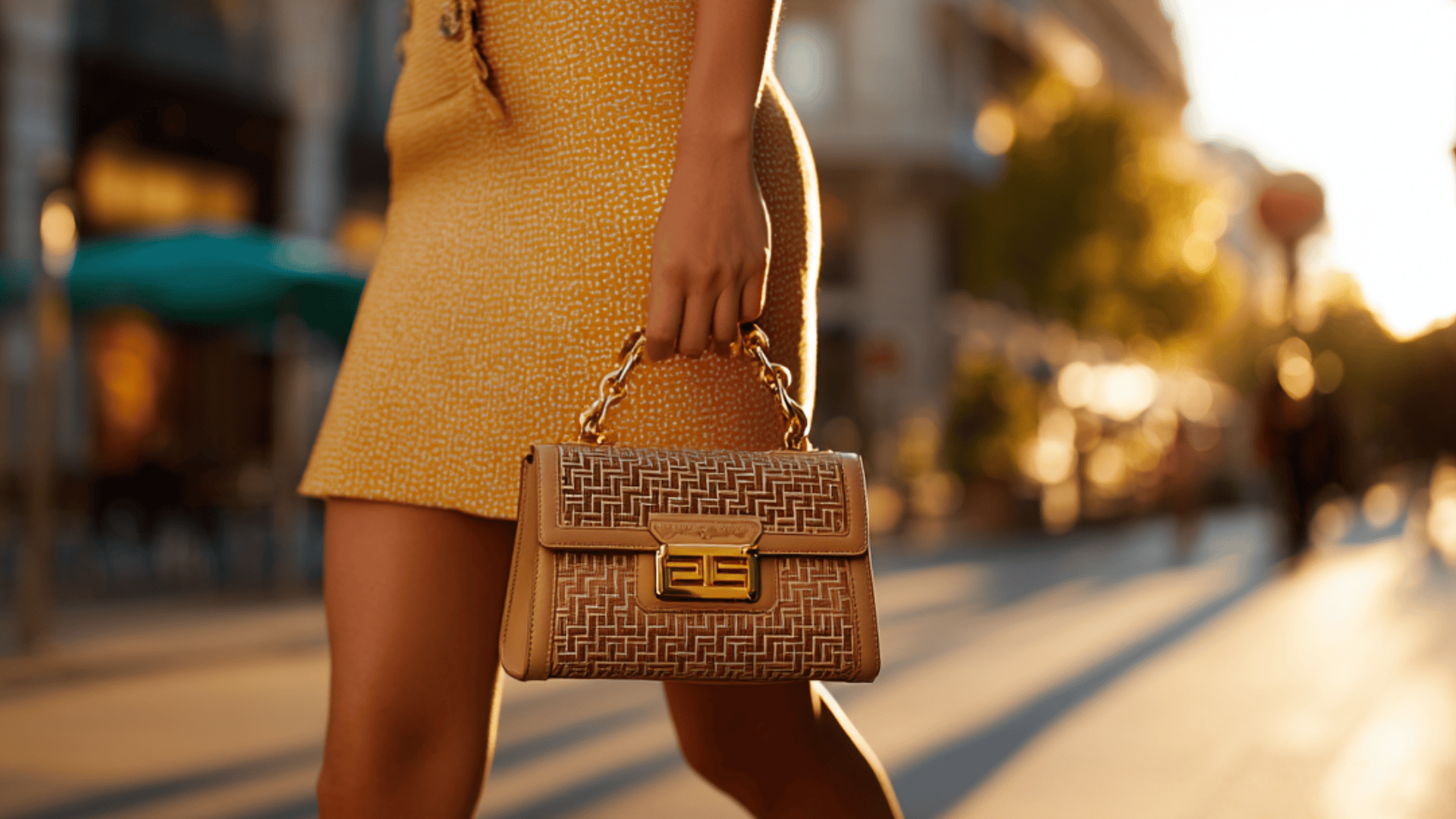
Micro bags and baguette handbags shrunk to impractical sizes. These tiny accessories held little beyond a credit card and lip gloss, but they communicated style awareness.
Designer versions from Fendi and Dior became status symbols. The smaller the bag, the more fashion-forward you appeared, even if functionality suffered.
4. Slip Dresses & Camisoles as Daywear

Slip dresses and camisoles moved from bedroom to street. Satin lingerie-inspired pieces worked as daywear, often layered over jeans or tees for a mixed-message look.
The trend blurred the lines between intimate apparel and regular clothing. Thin straps, bias cuts, and silky fabrics became acceptable for shopping, dining, or casual events.
5. Cargo Pants & Utilitarian Details

Cargo pants brought utilitarian style to casual wear. The multiple pockets served no real purpose in everyday life, but the silhouette felt relaxed and functional.
Both fitted and baggy versions existed. Paired with baby tees or tank tops, they offered a sporty alternative to jeans while maintaining the decade’s love for low-rise waistbands.
6. Statement Belts & Oversized Accessories

Statement belts with oversized buckles cinched waists and displayed designer logos. Oversized sunglasses covered half the face. Trucker hats added a casual edge to dressy outfits.
These accessories transformed simple outfits into styled looks. Large belt buckles featuring brand names or decorative metalwork became focal points that drew eyes to the midsection.
7. Platform Sandals & Chunky Heels

Platform sandals, strappy heels, and mules elevated looks literally and figuratively. Chunky soles balanced the era’s slim silhouettes. Heights ranged from moderate to extreme.
Metallic finishes, clear lucite, and embellished straps added visual interest. The shoes worked with everything from jeans to mini dresses, providing both height and a futuristic style.
8. Metallics & Embellishments
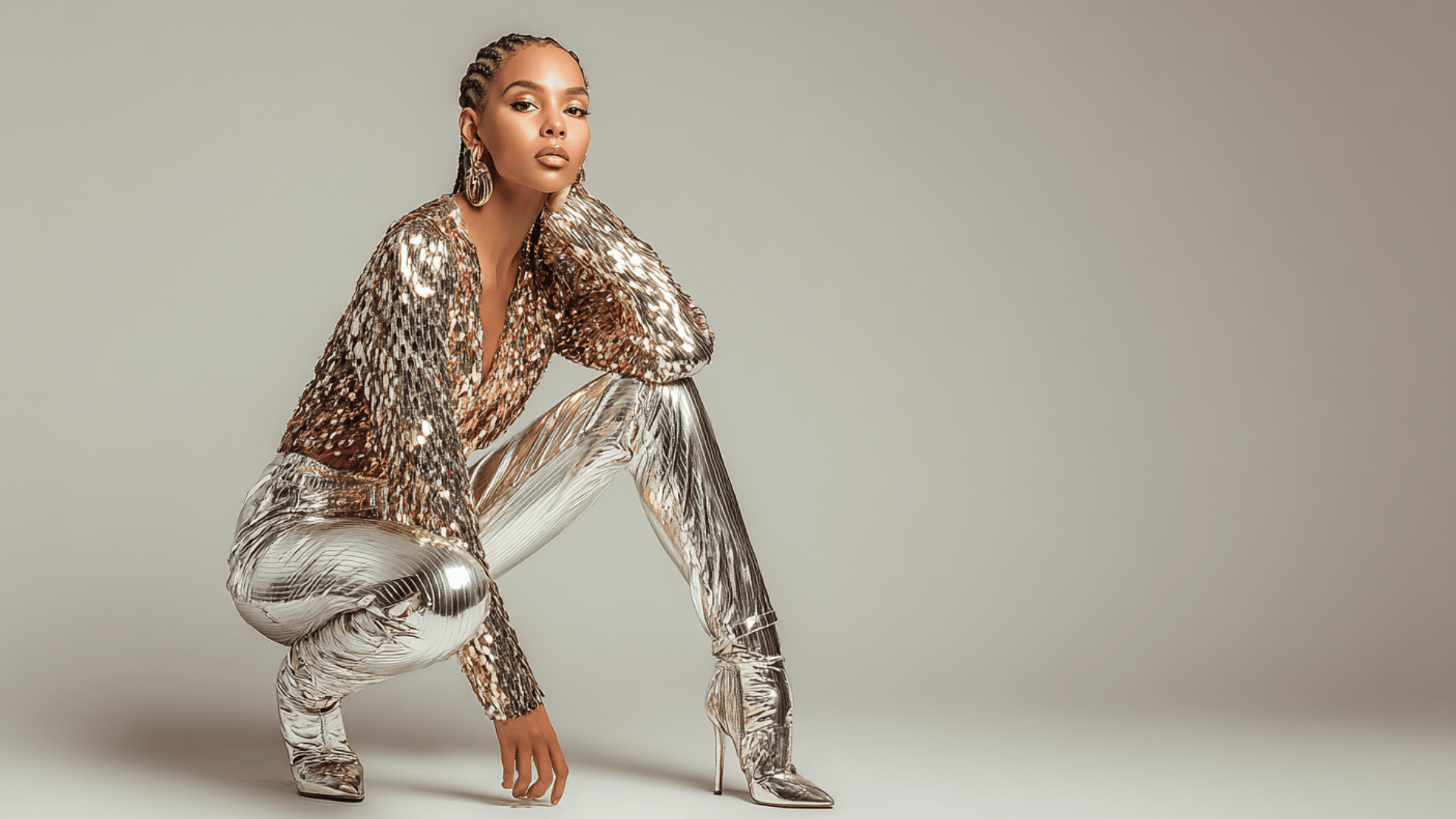
Metallics, rhinestones, sequins, and embellishments added shine to everything. Sparkle worked for day or night, casual or formal. Clothing featured decorative details that caught the light and drew attention.
Rhinestone-studded jeans, sequined tops, and metallic fabrics reflected the decade’s preference for maximum impact over minimalism. More was genuinely more.
9. Chokers & Layered Jewelry

Accessories included chokers, layered chains, body jewelry, and other decorative details that drew attention to specific features.
Chokers ranged from simple black ribbon to ornate designs. Multiple necklaces worn together created visual interest.
Belly chains, toe rings, and other body jewelry extended ornamentation beyond traditional areas, reflecting the era’s experimental approach to accessorizing.
Celebrity-Inspired Looks & Style Icons
Britney Spears made matching denim sets iconic and proved that rhinestones belonged on everything. Her looks mixed girl-next-door appeal with provocative styling, low-rise jeans with crop tops, baby tees, and strategic cutouts.
Paris Hilton and Nicole Richie turned pink into a lifestyle. Their velour tracksuits, tiny handbags, and metallic accessories defined early-decade glamour. They made looking casually wealthy seem effortless.
Christina Aguilera and Gwen Stefani brought pop edge through bold jewelry, contrasting colors, and confident crop tops. Their red carpet choices pushed boundaries while staying commercial enough for mainstream appeal.
Rachel Zoe elevated bohemian style into boho-luxury through her work styling celebrities. She mixed vintage pieces with high-end items, creating a look that felt both relaxed and expensive.
How to Incorporate 2000s Style Into Today’s Wardrobe
Wearing 2000s-inspired pieces today requires editing and restraint. Here’s how to reference the era without recreating it exactly.
-
Start with one statement piece rather than a full head-to-toe look. A micro bag or logo belt adds period flavor without overwhelming your outfit.
-
Adjust proportions for modern sensibility. Choose mid-rise jeans instead of ultra-low versions. The nod to the era remains clear without the constant wardrobe maintenance.
-
Scale down embellishments. Subtle sparkle references the trend without looking costume-y. A hint of rhinestones beats head-to-toe sequins.
-
Use layering techniques borrowed from the decade. Try a slip dress over a fitted tee, or wear a camisole under a structured jacket. These combinations feel fresh while honoring period styling.
-
Balance boldness with restraint. If you wear a loud logo piece, keep everything else simple. Let one item do the talking, and build the rest of your outfit around neutral basics that let the statement piece shine.
Conclusion
Early 2000s fashion mixed contradictions: futuristic and retro, minimal and maximalist, casual and luxurious.
The decade’s willingness to experiment created memorable trends that continue influencing current style.
Low-rise proportions, visible branding, and mixed textures all trace back to this period. The key to wearing these references today lies in selective adoption rather than literal recreation.
Choose elements that speak to your personal style, adjust proportions for contemporary fit, and remember that fashion cycles always bring opportunities to reinterpret the past.
Try incorporating one nostalgic piece into your next outfit and see how it changes your perspective on getting dressed.






